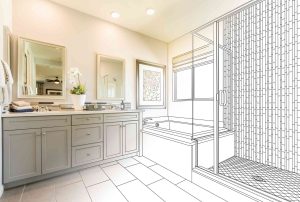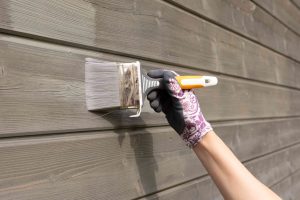Are you dreaming of a new kitchen island, an energy-efficient fridge, different kitchen cabinets, or all of the above? If so, you’re not alone. When American homeowners think of improving their homes, their first priority is often the kitchen. However, kitchen renovations can come with hefty price tags.
According to the Home Depot, the average cost to remodel a kitchen is $24,000 for a minor remodel (think cabinet refacing, energy-efficient appliances, and new countertops). While an upscale remodel (custom cabinetry, designer appliances, and high-end flooring) could set you back $136,000. So, what’s the best way to pay for it? We reviewed the five most popular ways to pay for a kitchen remodel, and the pros and cons of each.
1. Personal loan
A personal loan provides you with a lump sum upfront that you repay over a fixed term — often several years — in fixed monthly installments. Personal loans can fund as soon as the same day you apply for one, and don’t require collateral. That means you won’t have to put your home or car on the line to get a loan. Though you can find personal loans for bad credit, you’ll get the best rates if you have good or excellent credit.
Depending on the lender, loan amounts range from less than $1,000 to $200,000, and repayment terms can last more than 10 years, though five- and seven-year repayment terms are common. Annual percentage rates (APRs) tend to start around 5% for those with excellent credit, and top out at 36%. Some personal loans charge upfront fees — often called origination fees — which are deducted from the loan amount and can be as high as 12%, depending on the lender and your credit.
Compare Rates Now
Important
Use the APR to compare borrowing costs between lenders, as it accounts for the interest rate and any upfront fees.
Personal loans have several perks:
- They’re widely available online.
- Funding is typically quick.
- The interest rate (and your monthly payment) is fixed for the life of the loan.
- Available loan amounts are much higher than most credit card limits.
- They’re usually unsecured.
- Repayment terms are available up to 12 years for some home improvement loans.
- You can prequalify in minutes to get an idea of your rate and how much you can borrow — all without impacting your credit.
But since they’re unsecured, it can be hard to get approved for a personal loan if you have credit in the poor-to-fair range (FICO score below 670). Even with good credit, you might get a better rate with a home equity loan or line of credit, as long as you have enough home equity to qualify. Note that once you apply for a personal loan, the lender will conduct a hard credit inquiry which could temporarily lower your score.
on Credible’s website
View Details
on Credible’s website
View Details
on Credible’s website
View Details
on Credible’s website
View Details
on Credible’s website
View Details
on Credible’s website
View Details
on Credible’s website
View Details
on Credible’s website
View Details
on Credible’s website
View Details
Related: Best HVAC Loans
2. Home equity loan
Home equity loans are worth considering if you have sufficient equity in your home to qualify. Lenders generally require that you have at least 20% equity in your home to qualify; and they prefer that you borrow no more than 80% of the equity you have in your home. In other words, what you owe on your (first) mortgage and a home equity loan should not exceed 80% of your home’s value.
For example
If your home is worth $500,000 and you owe $200,000 on your primary mortgage, you may be able to take out a home equity loan up to $200,000.
If approved for a home equity loan, you receive the full loan amount upfront and can use it to pay for your kitchen remodel. Like a personal loan, you repay the loan through a series of fixed payments over a number of years — typically five to 20, but repayment could last up to 30 years, depending on the lender.
Home equity loans can be a good choice for a number of reasons:
- They may be easier to qualify for if you have fair or poor credit.
- You’re likely to get a lower rate on a home equity loan relative to a loan that isn’t secured by collateral.
- Repayment terms can last 20 to 30 years.
- Home equity loan interest may be tax-deductible.
On the downside, home equity loans have closing costs that tend to run around 2% to 6% of the loan amount, they can take over a month to close, and you’re limited by the amount of equity in your home. Plus, if you default on the loan, you could face foreclosure.
Tip
If you use a home equity loan to “substantially improve” your primary residence, you may be able to deduct the interest on your taxes.
3. Home equity line of credit (HELOC)
A HELOC is similar to a home equity loan in that you can borrow a percentage of your available home equity, they’re secured by your home, and can take a month or more to close.
However, instead of receiving a lump sum loan upfront, you receive access to a credit line that you can draw from as needed for a set amount of time, which can be helpful if you want to pay for a kitchen remodel in phases. A variable rate of interest is charged on the amount you use, and you’re generally required to only pay interest during the draw period — which may last 10 years.
Once the draw period ends, you enter the repayment period. During this time, you’ll pay off the loan and can’t continue to use the credit line. The repayment period can last up to 20 years. However, some HELOCs require you to pay off the entire balance in a single balloon payment once the draw period ends. Make sure you understand the terms of repayment before you take out a HELOC, so you can plan accordingly.
HELOCs offer the flexibility to:
- Pay for your project in phases.
- Avoid paying interest on money you don’t need to spend yet.
- Get a lower interest rate than an unsecured loan, like a personal loan.
- Deduct interest payments on your taxes (if used for home improvements).
However, the variable rate of interest could lead to unwelcome surprises if rates change, and a HELOC with a balloon payment could be a very bad idea unless you save a lump sum to cover the payment. Also, like home equity loans, your home is on the line if you default on the loan.
4. Credit card
Credit cards are a very familiar financing option, though may be best for smaller projects since credit lines are often lower than other kitchen remodel loans offer. You can use a credit card to cover your kitchen remodel expenses and will only be required to make the minimum payments each month. However, you will be charged the card’s purchase APR on any outstanding balance you carry, which is often higher than the average interest rate on a personal loan, according to the Federal Reserve.
That said, some credit cards offer a 0% APR promotional period up to 24 months. If you can get one (you’ll need good credit), you could finance your kitchen remodel expenses interest-free. But if you can’t pay off the balance by the end of the promotional period, it would be subject to the normal APR, which could be steep.
For many, credit cards won’t be the best way to finance a kitchen remodel, but may be a good tool if:
- You qualify for a 0% promotional APR card (and can pay the balance before the promo period expires).
- Your kitchen remodel is minor.
- You can’t qualify for other loan options.
5. Cash-out refinance
Like a home equity loan and HELOC, a cash-out refinance requires that you have home equity. It’s when you refinance your mortgage for a larger amount than what you currently owe and pull out the difference in cash. For example, if your home appraises for $500,000 and you owe $200,000 on your mortgage, a lender may let you refinance that loan into a new one for $400,000.
You could then use the equity you’ve pulled out — $200,000, in this case — for your kitchen remodel or any other expenses you want to cover. After you receive the loan, you begin making repayments.
Upsides include:
- Unlike a home equity loan or HELOC, a cash-out refinance leaves you with a single loan, not a second mortgage.
- You may be able to lower the rate on your current mortgage.
On the downside, it does require your home as collateral, and since closing costs are based on a percentage of the entire loan amount, they could be much higher than other options.
Important
A cash-out refi works best if you can lower your interest rate through a refinance.
Kitchen remodel FAQ
Can I finance a kitchen remodel?
Yes, the costs involved with a kitchen remodel, such as labor, materials, and appliances, can be financed in a variety of ways. For example, you can use funds from personal loans, credit cards, home equity loans, or cash-out refinance loans to cover them.
What is the best way to finance a kitchen remodel?
There are pros and cons to each financing option. The right choice will depend on your situation and preferences. Personal loans are a popular choice because they’re convenient to get and can come with competitive rates. However, credit cards, home equity loans, HELOCs, and cash-out refinance loans are also worth considering.
Is it smart to take out a personal loan for a kitchen remodel?
It can be a smart decision to take out a personal loan for a kitchen remodel. To figure out if it’s the right move for you, calculate the total estimated cost of the remodel, including the financing costs, along with the estimated amount you can recoup through a boost to your home’s value. With that information, you can decide if it’s worth it or not. Homeowners recoup an average of 85.7% of their costs when performing minor, mid-range kitchen remodels, according to the 2023 Cost vs. Value Report by Remodeling, but just 41.8% on major, mid-range kitchen remodels.
What is the best loan to remodel a kitchen?
The best loan for a kitchen remodel will depend on your situation and preferences. If you prefer a fast, convenient, unsecured loan and have good-to-excellent credit, a personal loan can be a great solution. On the other hand, if you have fair credit and are having trouble getting approved for an affordable personal loan, a home equity loan, HELOC, or cash-out refinance may be a better fit. Offering your home as collateral will make it easier to get approved and can help you get a lower interest rate.
Read the full article here














